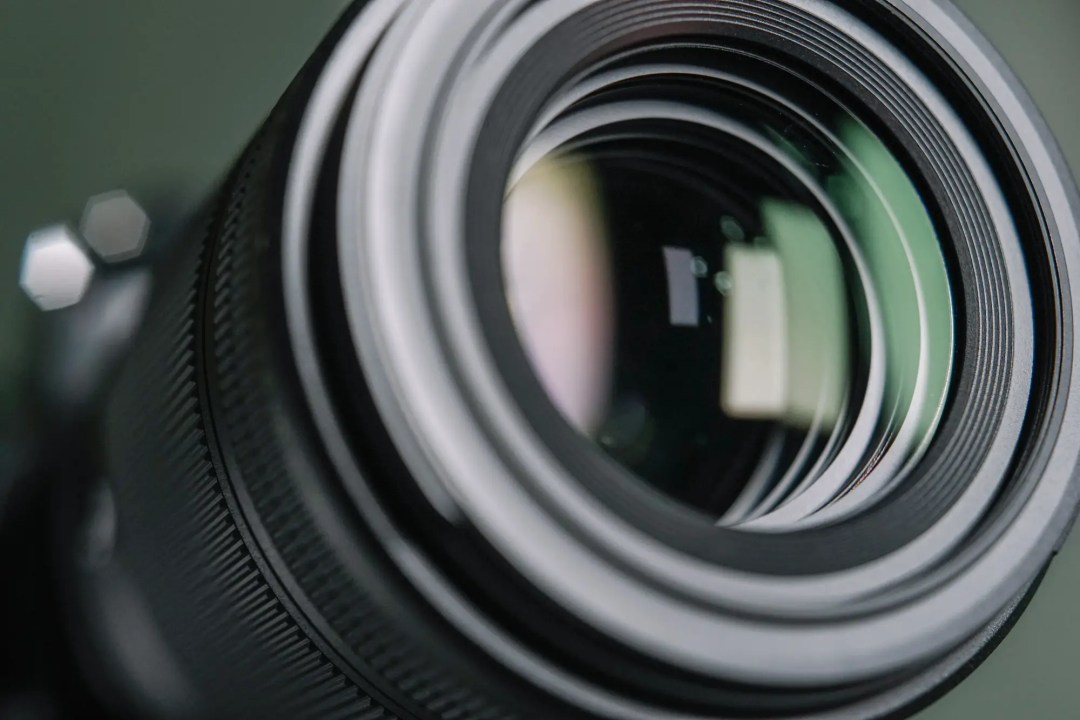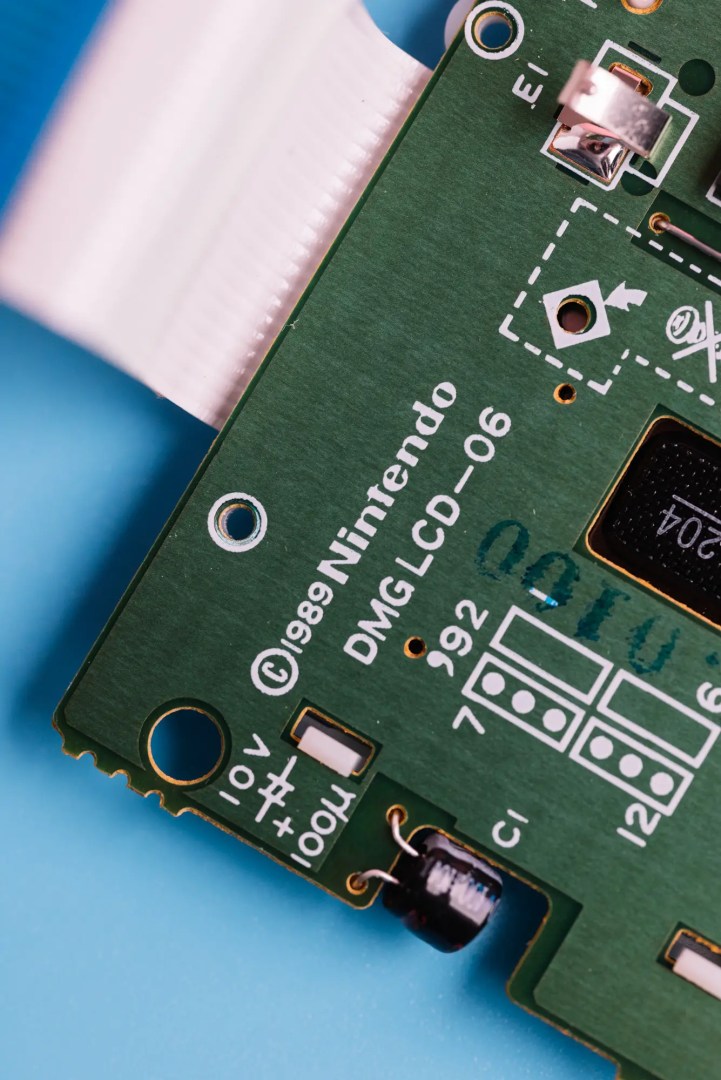If there’s one thing I’ve learned in my time reviewing macro lenses it’s that eyeballs are gross.
Red capillaries wriggling through the sclera? Hideous. The fibrous stroma of the iris? Gag-inducing. And don’t get me started on tear ducts. But taking pictures of eyes is a strong test of any macro lens. And that’s where I found myself last week, holding my breath, the enormous front element of the Nikon Nikkor Z MC 105mm F/2.8 VR S quivering inches from my oldest daughter’s eye.
Turns out that the Nikon Nikkor Z MC 105mm F/2.8 VR S is a truly impressive lens, and a solid choice for Nikon Z Series photographers who are looking for either a telephoto lens for portraits or a dedicated 1:1 reproduction ratio macro lens, or both. It even makes eyeballs look nice!
Nikon Nikkor Z MC 105mm F/2.8 VR S Specifications (from Nikon)
- Mount: Nikon Z Mount
- Focal Length: 105mm Prime Lens
- Maximum Aperture: f/2.8
- Minimum Aperture: f/32
- Format: FX (Full Frame)
- Maximum Angle of View (DX crop-sensor cameras): 15°20′
- Maximum Angle of View (FX-format): 23°10′
- Maximum Reproduction Ratio: 1x
- Lens Elements: 16
- Lens Groups: 11
- VR (Vibration Reduction) Image Stabilization: Yes
- Lens shift using voice coil motors (VCMs)
- Diaphragm Blades: 9, rounded diaphragm opening
- ARNEO Coat: Yes
- Nano Crystal Coat: Yes
- ED Glass Elements: 3
- Aspherical Elements: 1
- Fluorine Coat: Yes
- Super Integrated Coating: Yes
- Autofocus: Yes
- AF Actuator: STM (stepping motor)
- Internal Focusing: Yes
- Minimum Focus Distance: 0.96 ft. ( 0.29m)
- Focus Mode: Auto/Manual
- Focus limit switch with two positions: FULL (∞ to 0.29m) and 0.5m to 0.29m
- Filter Size: 62mm, P = 0.75mm
- Approx. Dimensions (Diameter x Length): 3.4 in. (85 mm) x 5.6 in. (140 mm), Distance to end of lens from camera lens mount flange
- Approx. Weight: 22.3 oz. (630 g)
Details, Quality, and Ergonomics
Experienced photo nerds will have read the spec sheet posted just above this paragraph and come to the same conclusion that I did when I first skimmed it – this lens has everything.
And it does! Weather sealing. Vibration reduction. Stepping motor auto-focus with no external moving parts. A lot of glass elements, some of which are aspherical. Nano Crystals. Fluorine. All of the coatings, in fact. Yeah, that’s a lot of stuff, alright.
But I expect it. I deserve it, no less. Because the lens costs $1,049, and that’s a lot of dollars.
The lens’ external design is elegant and its build quality is excellent. Moving from the mount to the filter threads we find a mix of materials and textures.
The mount and base of the barrel are made of metal. Upon this segment we find control switches to alternate between manual focus and auto focus modes, as well as a focus limiting switch. This switch tells the camera and lens to focus either through its entire range of focus, or to limit the available focus range to close focusing distances only (0.5m to 0.29m). This close focusing setting makes auto-focus macro photography a bit faster and easier.
Next we find a variable-use control ring with a fine double knurled texture, and from here to the end of the lens everything is made of plastic.
The next segment contains an OLED screen for displaying various information, a DISP button for activating and alternating the OLED, and an L-Fn button, which is able to be mapped by the user to one of a number of custom functions in-camera.
The next segment is the large, rubber, straight knurled manual focusing ring, after which we find a static rubber coated ring useful for gripping and mounting the lens. The actuation of this focus ring and the previously mentioned control ring is smooth and nicely damped. Both rings feel great to use.
Lastly we find the plastic lens bezel with integrated bayonet mount for the lens’ included lens hood, and plastic filter threads for mounting filters (62mm diameter).
While plastic components are typically scoffed at by camera nerds, this plastic feels dense and is finished nicely. And while plastic filter threads aren’t as resilient as metal, it’s true, it’s also worth remembering that plastic filter threads tend to save a lens from major damage in the event that the lens is dropped with a mounted flash ring or other accessory screwed in place.
Of course, not dropping the lens is best.
The lens feels nicely balanced on my smaller Nikon Z5 full frame mirror-less. All of the controls rest where they should, and after just a few moments of familiarization, use of the Nikkor 105mm is first nature. Easy.
The lens is weather-sealed. It’s dust-resistant. Focus is internal, so there’s no air being drawn into the lens during focusing. And the fluorine lens coating helps keep things clean.
It’s clear that Nikon has made another pro-spec lens for real photographers. We can use this to shoot snails in a swamp or product shots in a desert without worry that the lens will fail or become contaminated. Non-adventurous photography amateurs (like me) can also use it.
Performance and Image Quality
This lens is very, very good. Like all of the other Z Series lenses that I’ve used in the past two years, it’s a better lens than I need. It’s not perfect, but nothing is.
Let’s start with auto-focus. AF speed and accuracy will very slightly differ depending on the camera to which the lens is mounted. But generally speaking, this lens is similar to many AF macro lenses in that its “normal” focus range AF is excellent (comparable to any good telephoto lens). When shooting portraits or subjects at distances from 0.5m to infinity, it snaps to focus quickly and accurately.
When we’re shooting closer subjects, things are a little trickier. When shooting macro subjects there is a tendency for the focus to hunt or focus in the wrong spot. Macro photographers will probably be used to this. I am. And my solution is the same as it’s ever been. I let the lens focus as best it can and then adjust by pulling the camera further away or inching it closer to the subject until my point of focus is exactly where I want it to be.
Alternately we can switch to manual focus. This works well. The focus-by-wire electronic manual focus is responsive and well-calibrated. It doesn’t feel as nice as the older manual focus lenses and their mechanical helicoids, but it’s just as accurate and just as fast.
Sharpness is beyond complaint. Nikon has prioritized wide open shooting, and at f/2.8 this lens is among the sharpest macro lenses in the world. As expected for the 105mm focal length (a focal length which doesn’t tend to naturally show much edge softness) sharpness in the corners is excellent, diminishing only slightly even when shot wide open.
If we stop down to f/4 we see the expected extension of center sharpness even further to the edges, creating virtually perfect sharp-across-the-frame images.
At macro focusing distances the lens tends to lose a bit of sharpness compared to itself at normal working distances. This is likely a result of the depth of field becoming very shallow. At these macro distances, then, it’s very useful to stop the aperture down to f/8 to achieve excellent sharpness and adequate DOF. Of course, this necessitates bright light to maintain fast shutter speeds, but that’s been true of macro photography since the dawn of the craft.
The lens does help to mitigate any motion blur that may be incurred by shooting lower light macro shots, since it utilizes Nikon’s VR (vibration reduction) tech. This, combined with the sensor-shift stabilization found in most Nikon Z Series mirror-less cameras, helps to keep things clean and crisp. It works well.


Compared to the F Mount Version, and Optical Aberrations
Nikon has made considerable effort to ensure that each of the new Z Mount lenses for their mirror-less cameras improves upon the earlier equivalent lenses for their aging F Mount DSLRs. The new Z 105mm is no exception to this trend.
The optics of the new lens have been bolstered from the F Mount version‘s 14 elements in 12 groups with 1 ED (extra-low dispersion) element to a new formula made of 16 elements in 11 groups with 1 aspherical element and 3 ED elements.
In addition to these physical optical changes, the new lens adds everything that Nikon has carried their best tech from the F Mount version, and added new technologies that they’ve refined since. These include Nano Crystal coating, ARNEO coating, and fluorine coating.
The first of these technologies, Nano Crystal coating, is an anti-reflective coating developed by Nikon to eliminate internal lens element reflections across a wide range of wavelengths. This effectively solves ghosting effects caused by red light, and reduces ghost and flare effects caused by light entering the lens diagonally.
ARNEO coating uses another anti-reflective coating to further reduce ghost and flare effects from incidental light entering the lens vertically. This helps the lens make clear images when shooting with a bright light source located within the frame.
Fluorine coating is applied to the external lens element. This coating withstands dust, water droplets, dirt, and oils, and facilitates easier cleaning in the event that the lens comes into contact with these contaminants. The fluorine coating is additionally anti-reflective, which adds to optical clarity.
The result of all this technological nonsense is that the new Z Mount 105mm makes sharper, better images than the older F Mount 105mm. I detest MTF charts, though whenever I write lens reviews I double check the eyeball test with a glance at the MTFs, and it’s apparent that the eyes have it.
In addition to improved sharpness across the frame at all equivalent aperture values, the new lens is better than the old one at mitigating chromatic aberration (color fringing at high contrast areas of an image). It’s also better at mitigating spherochromatism (color fringing in the out of focus foreground and background areas of an image). Both of these aberrations are, in fact, so close to perfectly eliminated that I haven’t been able to see a single noticeable example of color fringing in any of my sample shots. Nikon has solved that problem, at least with this lens, at this focal length.
All of that said, let us not oversell it. The older F Mount 105mm is very much a modern, excellent, almost perfect lens. The new Z Mount version is not enough of an upgrade to push anyone out of the F Mount ecosystem and into the Z Mount models, if that hasn’t yet happened. It’s nice that the latest lenses from Nikon happen to be incrementally better than the last range (not always a given, in the photography world), but this new lens won’t change any F Mount 105mm owner’s life.
A few final notes on new versus old.
The new lens adds some ergonomic flourishes over the old. It has an Auto and Manual Focus switch, like the older model, but the newer model also adds a Focus Limiter mode, which constrains the focus down from the full range to a close focusing range of 0.5m to 0.29m (the lens’ minimum focus distance).
The new lens has a user-configurable function button and a nice, thin function ring. These controls can be set in-camera to control things like ISO, exposure compensation, or aperture. A very nice tactile addition that will help those of us who enjoy older, manual-focus lenses find our comfort zone.
It also adds an OLED on the top of the lens which displays a myriad of user-selectable information (focus distance, f/stop, reproduction ratio, and more). The old lens doesn’t have that. And, truth be told, the new lens doesn’t really have it either. Because it auto-offs after an outrageously short period of time, requiring that we keep pressing the DISP button on the lens barrel to reactivate it. It’s nice when it works, but it’s usually just a black, dead screen.
Lastly, the new lens is slightly larger (25mm / 1 inch longer) than the F Mount version, which is expected, given the additional lens elements. However, and this is less expected for the very same reason, the new lens weighs slightly less than the F Mount predecessor (by 130 g). That’s a nice bonus.
Compared to the Nikon Nikkor Z 50mm F/2.8 MC
Nikon offers another dedicated macro lens in their Z Series. This, the Nikkor Z MC 50mm F/2.8, is different from the 105mm in a few key ways.
The first and most obvious difference is that the 50mm lens is a 50mm lens. That means it’s smaller than the 105mm, shoots more “normal” photos, and will probably be more useful to most everyday and casual photographers. It would be possible, and indeed possibly preferable for many people, to buy and mount the Z MC 50mm and use it as an all-around lens that can also take true 1:1 macro photos. People have been doing this since the original Nikon F.
The Z MC 50mm is also smaller and lighter than the 105mm, by a wide margin. It costs about $400 less than the 105mm. And the macro photos it makes will be just as good for the vast majority of non-professional photo nerds.
Where the Z MC 50mm falls short compared to the 105mm is in the finer points.
The 105mm is a part of Nikon’s higher spec S Line. The Z 50mm MC is not. Thus, the 50mm’s optical formula, coatings, and build are of a supposedly lower standard. Will the lack of Nano Crystals and ARNEO coatings be missed if we choose to buy the 50mm? Probably not. But maybe so. It depends on the pixel peeping habits of the user.
Additionally, the Z 50mm MC’s focusing method is not internal as in the 105mm. Thus, dust and contaminants may enter the 50mm lens over time. It’s possible, however unlikely.
In use, the Z 50mm MC has a shorter working distance than the 105mm. This means that we’ll need to be outrageously close to our subject to achieve true 1:1 reproduction with the 50mm. This limits our subject matter a bit, and makes photographing spiders somewhat unnerving (or, for me, downright terrifying).
Finally, the 50mm lacks the OLED screen of the 105mm. How awful.
Still, it’s hard not to choose the Z 50mm MC when we see how much less it costs. And with those savings, we could buy the amazing ES-2 Film Digitizing Adapter, which fits to the front of the Z 50mm MC and allows us to digitally “scan” 35mm film negatives and mounted slide. For me, a film shooter, that’s a very attractive product, and one that cannot be used with the larger Z 105mm MC.
Compared to Other Z Mount Macro Lenses
There exist a number of alternative macro lenses for Nikon’s Z Mount system from a number of manufacturers in numerous focal lengths. Lenses from Venus Optics, Voigtlander, and TTArtisan, to anme a few. These lenses, however, are all manual focus lenses. For this reason, I hesitate to dive too deeply into comparing these to Nikon’s AF lenses since the core functionality differences are so great.
That said, readers who are interested in a manual-focus macro alternative to Nikon’s 105mm should investigate the Venus Optics Laowa 100mm f/2.8 APO. This is the lens that comes closest to the core specs of the Nikon lens reviewed in today’s article.
While the Laowa 100mm lacks a lot of the high tech stuff found in the Nikon lets, it actually reaches a greater magnification ratio of 2:1. Whether or not the image quality matches Nikon’s is another story, a story that I’ll expand upon in an upcoming article.
Final Thoughts
The Nikon Nikkor Z MC 105mm F/2.8 VR S is essentially two great lenses in one. It’s works beautifully as a portrait lens and standard telephoto lens. Additionally, it’s Nikon’s preeminent macro lens in the Z Series lens system. It gives a longer working distance than the shorter Z 50mm MC lens offered by the brand, and utilizes all of Nikon’s highest technology to create incredibly sharp, stunning images.
This lens is a unique and interesting addition to my camera bag. It does things that no other lens in my kit can do. While it’s somewhat expensive, it’s worth noting that the cost is lower than the comparable offerings from Canon and Sony. Further, it’s a lens that will still make stunning photos a decade or more from now, and it’s a lens that I can transfer to my next Z Series camera should I ever find a reason to upgrade from the Z5.
For Nikon Z shooters, the Nikkor Z 105mm F/2.8 MC is one of the standouts of the lineup. It’s a good one.

Get your own Nikkor Z 105mm F/2.8 MC from B&H Photo Here
Shop for cameras and lenses at F Stop Cameras
Follow Casual Photophile on Youtube, Twitter, Facebook and Instagram
[Some of the links in this article will direct users to our affiliates at B&H Photo, Amazon, and eBay. By purchasing anything using these links, Casual Photophile may receive a small commission at no additional charge to you. This helps Casual Photophile produce the content we produce. Many thanks for your support.]































Great pictures !!!
I love the work Nikon is making on mirorless !!!